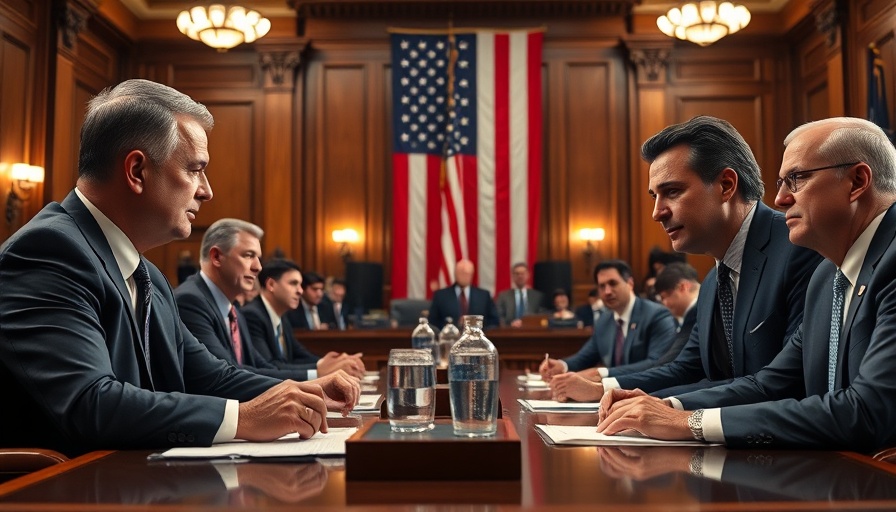
The Political Theater of Trump's Longest Address
President Donald Trump pulled off a political spectacle during his address to a joint session of Congress—a speech that marked the longest delivery in history, arriving at an impressive hour and forty minutes. In an era defined by polarization, this lengthy oration further showcased the deepening divide between the President and the Democratic Party, depicting a party seemingly at odds with itself as much as with the administration.
Democratic Dissent in the Hall
The atmosphere in the chamber was electric with dissent. Texas Representative Al Green generated headlines when he heckled Trump, cane in hand, before being escorted out by the Speaker of the House, Mike Johnson. This moment encapsulated the Democrats’ attempts to disrupt the narrative Trump was trying to build—a narrative that heavily emphasized his supposed accomplishments amidst loud voices of protest. Many Democrats donned bright pink jackets and held up signs declaring “False” and “Musk Steals,” further underlining the discontent among opposition members. As Trump himself noted during the address, “I realize there is absolutely nothing I can say to make them happy.” The remark echoed through a chamber marked by visual signs of division.
Focus on Executive Actions Over Legislative Proposals
While traditionally such addresses are platforms for presenting new legislative agendas, Trump’s speech leaned heavily on enumerating the successes of his executive actions rather than making fresh proposals. He called for Congress to sign the “Take It Down Act” to combat revenge porn generated by artificial intelligence and pushed for additional funding to back his immigration policies. However, the focus felt more like a retrospective of his achievements than a forward-looking agenda.
Fact-Checking the Claims
His address was rife with exaggerated statements and misleading claims, as soon to be examined by multiple outlets, including CNN. For instance, Trump asserted that his tariffs had resulted in “trillions” in revenue, despite studies showing that the burden of tariffs largely falls on American consumers. His claims about the Department of Government Efficiency also inflamed critiques, as presented numbers often lacked factual backing. This tendency to embellish facts raises questions about accountability in political rhetoric, inviting voters to dissect the authenticity of what they hear.
Staging a Return to Power
Trump's speech served not only as a recapitulation of his policies and priorities but also as a strategic maneuver to position himself as a formidable candidate for re-election post-2024. He stated, “We have accomplished more in 43 days than most administrations accomplish in four years or eight years,” aiming to bolster his standing among Republican supporters. This form of political theater, rife with contentious exchanges and combative rhetoric, sets the tone for an election cycle marked by deep divisions and ongoing battlegrounds.
The Stakes Ahead
As we spiral further into 2025, the impact of Trump's address will likely resonate well beyond its delivery. The content and reaction within the chamber exemplify the crux of America’s political dynamics—a clash of ideologies, identities, and visions for the nation. The audience of top wage earners in Philadelphia, who often consider the economic ramifications of such speeches, may see this as a barometer of upcoming policy shifts and the potential for volatility in markets -especially regarding tariffs and trade policies- as Trump pushes forward.
Conclusion: Understanding the Drama of Politics
Constituents and critics alike should reflect on the implications of this address on their beliefs and expectations from their representatives. Understanding the implications of Trump's rhetoric not only shapes our political landscape but ultimately embodies the choices voters will have to make in the unfolding political narrative.
 Add Row
Add Row  Add
Add 




Write A Comment